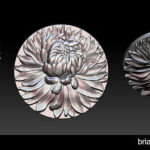I. Understanding Shabby Chic Style: Key Characteristics and Inspiration
II. Step-by-Step Guide to Upcycling Wooden Furniture for a Shabby Chic Look
III. Essential Tools and Materials for Your Upcycling Project
Understanding Shabby Chic Style: Key Characteristics and Inspiration
Hey there! If you’re diving into the world of interior design or simply looking to refresh your living space, you might have come across the term Shabby Chic. This delightful style is not just a trend; it’s a way of life that embraces comfort, nostalgia, and a touch of whimsy. So, let’s chat about what makes Shabby Chic so special!
Key Characteristics of Shabby Chic
Shabby Chic is all about creating a warm and inviting atmosphere. Here are some of its defining characteristics:
- Soft Colors: Think pastels and muted tones. Soft pinks, gentle blues, and creamy whites dominate this aesthetic, creating a peaceful and serene vibe.
- Weathered Furniture: The beauty of Shabby Chic lies in its imperfections. Furniture that shows signs of age and wear is celebrated, giving each piece a unique story.
- Feminine Touches: Floral patterns, lace, and vintage fabrics often adorn Shabby Chic spaces, adding a delicate, romantic feel.
- Eclectic Mix: This style encourages mixing and matching different furniture styles and decor elements. You might see a vintage chair paired with a modern table—it’s all about creating a curated yet cozy look.
- Natural Elements: Incorporating materials like wood, wicker, and linen brings a sense of nature indoors, enhancing the organic feel of the style.
Inspiration Behind the Style
Shabby Chic draws inspiration from various influences, steeped in history and personal stories. Here are a few sources of inspiration that can help you understand the essence of this charming style:
- The English Countryside: Picture quaint cottages with overgrown gardens and aged décor. This rustic charm perfectly embodies the Shabby Chic lifestyle.
- Vintage Finds: Thrift stores, flea markets, and estate sales are treasure troves for discovering unique pieces that can add character to your home.
- Art and Literature: The romantic notions found in classic novels and paintings often permeate Shabby Chic, inviting a sense of nostalgia that resonates with many.
At its core, Shabby Chic is more than just a decorating style; it’s a philosophy that encourages us to embrace the beauty of imperfection and cherish the stories woven into our spaces. So, if you find yourself drawn to the soft hues and vintage vibes, you’re not alone! This style invites warmth and a sense of home, creating a sanctuary where memories can flourish.
As we venture further into the world of upcycling and decorating, keep these key characteristics and sources of inspiration in mind. They will serve as your guiding light in creating your very own Shabby Chic haven!
Step-by-Step Guide to Upcycling Wooden Furniture for a Shabby Chic Look
Are you ready to transform that old piece of wooden furniture gathering dust in your garage or attic into a stunning centerpiece for your home? Upcycling furniture is not just a fun and creative project; it’s also a fabulous way to give your space a touch of charm and personality! Let’s dive into the step-by-step process of achieving that enchanting shabby chic look.
Step 1: Choose the Right Piece
The first step in your upcycling journey is selecting the perfect piece of furniture. Look for items that have a solid structure but perhaps show signs of wear and tear—think a cute side table, an old chair, or a worn-out dresser. These imperfections are what will add character to your shabby chic style.
Step 2: Clean Your Furniture
Once you’ve chosen your piece, give it a good cleaning. Use a damp cloth to wipe off dust and dirt, and if it’s really grimy, a mixture of warm water and mild soap will do the trick. Make sure it’s completely dry before moving on to the next step.
Step 3: Sand it Down
Now it’s time to bring out the sandpaper! Gently sand the surfaces to create a smooth finish. This step is crucial as it helps the paint adhere better and also allows you to reveal some of the beautiful wood underneath. If your furniture has any rough spots or peeling paint, don’t hesitate to give them a little extra attention!
Step 4: Apply Primer
Applying a primer is a great way to ensure that your paint job looks flawless. Choose a water-based primer for easy cleanup. Apply a thin layer using a brush or roller, and allow it to dry completely. This step is particularly important if you’re working with a darker piece of furniture that you plan to paint a lighter color.
Step 5: Paint with Your Chosen Color
Now comes the fun part: painting! Choose soft pastels, creams, or muted colors typical of shabby chic style. Use chalk paint for a matte finish that adds to the vintage feel. Apply the paint in thin layers, allowing each coat to dry before adding another. Two to three layers should do the trick!
Step 6: Distress Your Piece
For that quintessential shabby chic look, you’ll want to add some distressing. Once your paint is dry, take a fine-grit sandpaper and lightly sand the edges and corners of the furniture. This gives it a beautifully worn appearance, as if it has a history of charming stories to tell.
Step 7: Seal the Deal
To protect your newly upcycled furniture, apply a clear sealant. A wax finish or polyurethane can work well—just follow the manufacturer’s instructions. This step will ensure that your piece remains in tip-top shape for years to come.
Step 8: Add Finishing Touches
Finally, embellish your furniture with some shabby chic accessories. Consider adding vintage knobs, or layering with a soft throw or some delicate floral arrangements. The key is to make it uniquely yours!
And there you have it! With a little creativity and effort, you can turn that forgotten wooden furniture into a charming shabby chic accent for your home. Enjoy your upcycling adventure!
Essential Tools and Materials for Your Upcycling Project
So, you’re ready to dive into the wonderful world of upcycling and give your wooden furniture a fabulous Shabby Chic makeover! That’s fantastic! Before you start, let’s make sure you have all the right tools and materials at your fingertips. After all, nothing beats the thrill of transforming a piece of furniture into something that feels uniquely you.
Tools You’ll Need
Let’s kick things off with the essential tools. Here’s what you should gather:
- Screwdriver Set: A good set will help you remove any existing hardware. You don’t want to wrestle with rusty screws, do you?
- Sander: Whether you opt for a hand sander or an electric one, this tool is a must for smoothing out your wood surface. Aim for a fine-grit sandpaper for that perfect finish.
- Paintbrushes: A variety of brushes, including a wide one for larger areas and a smaller one for detail work, will make your painting process much smoother.
- Paint Roller: For larger surfaces, a roller can speed up the application process and give you a nice, even coat.
- Drop Cloths: Keep your workspace tidy. Lay down some drop cloths to protect your floors from paint splatters and dust.
- Clamps: Use these to hold pieces together while the glue dries or while you work on them. It’s a simple way to ensure everything stays in place.
Must-Have Materials
Now that you have your tools ready, let’s talk about the materials you’ll need for that Shabby Chic transformation:
- Chalk Paint: This is the star of your upcycling project! Chalk paint is perfect for achieving that rustic, matte finish characteristic of Shabby Chic style. Plus, it adheres beautifully to furniture without much prep work.
- Wood Stain: If you want to enhance the natural grains of your wood, a good wood stain can be your best friend. It adds depth and character to your piece.
- Clear Sealer: A protective layer after painting or staining? Yes, please! A clear sealer will help protect your furniture from wear and tear.
- Decorative Hardware: Think about knobs, handles, and hinges that reflect the vintage charm. Look for options at thrift stores or online marketplaces to add that perfect final touch.
Bonus Items
Finally, while not strictly necessary, a few bonus items can elevate your project:
- Stencils: If you’re feeling creative, stencils can add beautiful patterns or letters to your furniture.
- Fabric or Upholstery Materials: If your piece has cushions or seats, consider reupholstering them with a soft, vintage fabric to complete the look.
- Paint Distressing Tools: For that authentic, aged look, invest in some distressing tools (like sanding blocks or specialty brushes) to create that effortlessly worn vibe.
And there you have it! With these tools and materials in hand, you’re all set to embark on your upcycling adventure. Remember, the key is to have fun and let your creativity shine. Happy upcycling!










Comments